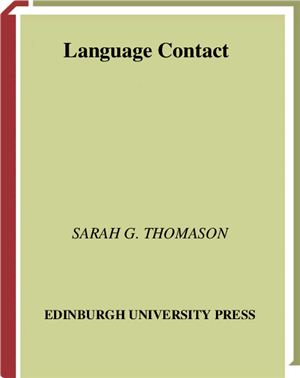Publisher: Edinburgh University Press.
Number Of Pages: 320.
Publication Date: 2001.
Format / Quality: pdf.
Language contact is everywhere: many nations have more than one official language, and quite possibly most people in the world speak two or more languages. What happens to different peoples and to their languages when they come into contact? In this survey of the social, political and linguistic consequences of language contact, Sarah G. Thomason focuses on what happens to the languages themselves - sometimes nothing, sometimes new words enter a language, sometimes new sounds and sentence structures will spread across many languages in a large geographical region; more rarely, entirely new languages arise in a contact situation. Conversely, one of the languages in contact may vanish entirely, and issues of language endangerment and death are explored here, together with chapters on multilingualism, pidgins and creoles, mechanisms of interference and the origins and results of contact-induced language change. Accessibly written by a leading expert in the field, this book is an ideal introduction for beginning students at all levels, and a useful resource for postgraduates, teachers and academic linguists.
Number Of Pages: 320.
Publication Date: 2001.
Format / Quality: pdf.
Language contact is everywhere: many nations have more than one official language, and quite possibly most people in the world speak two or more languages. What happens to different peoples and to their languages when they come into contact? In this survey of the social, political and linguistic consequences of language contact, Sarah G. Thomason focuses on what happens to the languages themselves - sometimes nothing, sometimes new words enter a language, sometimes new sounds and sentence structures will spread across many languages in a large geographical region; more rarely, entirely new languages arise in a contact situation. Conversely, one of the languages in contact may vanish entirely, and issues of language endangerment and death are explored here, together with chapters on multilingualism, pidgins and creoles, mechanisms of interference and the origins and results of contact-induced language change. Accessibly written by a leading expert in the field, this book is an ideal introduction for beginning students at all levels, and a useful resource for postgraduates, teachers and academic linguists.

